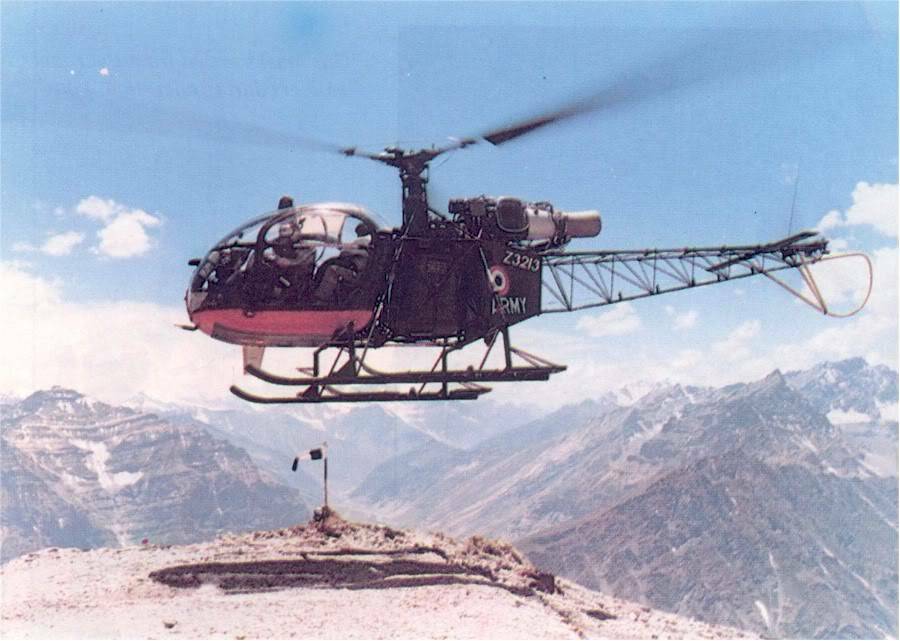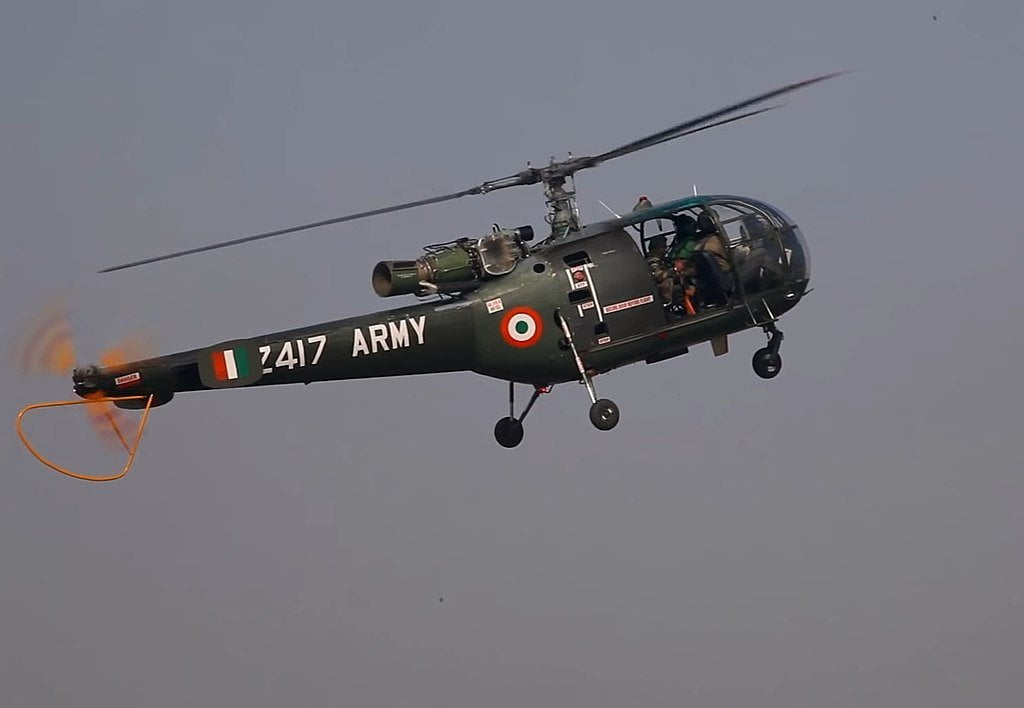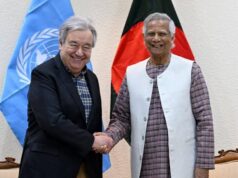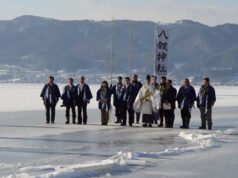The inside story: Mashkoh– Kargil as I saw it # 13
By
Brig Umesh Singh Bawa Vrc, SM

On 13 Jun 99, the PM was scheduled to visit the 8 Mountain Division at Matayan village in Kargil district of Jammu & Kashmir at 1030 hours to address the troops. We were also called there. At around 1000 hours, the enemy started shelling the area where we had gathered for PM’s address. We all started running for cover to escape the deadly fire and found the folds of the hills in close vicinity to take shelter. The aviation flight helicopters which were parked in the helipad close by, cleared off the area with great speed to escape the fire. The PM’s visit was thus cancelled because of the enemy firing. The shelling lasted for two hours, and after that, we all came back to our battalion areas safely. Luckily, there were no casualties. Who so ever had selected the place for the address of the PM had not used his common sense while doing so. Choosing a location for PM’s speech under direct observation and fire of the enemy was not a correct choice. It put so many lives of the troops in danger. Thank God, the fire came early! Imagine the plight if PM was addressing the troops and enemy had opened the fire then. I am sure many heads would have rolled. The staff officers of the division headquarters must select the place with some sense of security. Some of our artillery guns were also damaged during the enemy fire.
The next day, the brigade commander came to our makeshift operational room without announcing his arrival. Perhaps he wanted to surprise me! Well, yes, I was surprised by his appearance. At that time I was wargaming various options for the capture of Point 4875 with my company commanders. The brigade commander was neatly dressed, with proper anklets and was carrying his weapon with him. Seeing him carrying his firearm, I knew that I was about to be ticked off by him. I was casually dressed without my anklets and was without my gun. At once the commander retorted “where is your weapon? Don’t you know that we are in the war zone and you should be carrying your weapon with you?” I was quite taken aback by this question, but I answered swiftly, “sir, I am in my battalion area. If these 800 men of my battalion cannot protect their battalion commander, and I have to carry my weapon for my protection, within the battalion area, in that case, my troops are not worth their salt”. Commander took my answer in the right spirit but advised me to keep my weapon handy when required. I accepted my mistake and also took his advice in the right spirit.
Helicopter recce
The brigade commander wanted to carry out a confirmatory recce of Point 4875 complex in a helicopter, before finalising his plan of attack to capture it. One day, we got a helicopter for the aerial recce of the objective. My commander and I got a ride, but it wasn’t a pleasant one. We were supposed to get the helicopter from Dras helipad, which was approximately 15 km from our base in Maskhoh. When we were going by road, the enemy spotted our convoy and started targeting us. The artillery shells landed ahead, on the right and the left and behind our vehicles, but thank god we were safe and none landed on our convoy! We could see mountains of dust all over due to shelling. It is hard for the artillery to engage a moving target.

After going through this hell, we reached Dras a in the Kargil district on the NH 1 (former between Zoji La pass and Kargil town. We thought the worst was over and now we shall board the helicopter. Even the helipad was under enemy observation and fire. We were told that the chopper would come from behind cover for a short while, and we should be ready and jump into it as it landed. The time given was just ten seconds! It was to avoid enemy fire on the aircraft. We saw the chopper slowly rising from the valley behind with its big nose emerging followed by its massive rotating blades, which were deafening. The helicopter landed for a brief moment with its rotor blades still rotating. We ran and jumped from either side and entered the chopper in an instant. After that, we were off towards the objective area, Point 4875. The objective was a long feature approximately 1600 meters as the crow flies. We saw several men in black salwar suits and some in uniform on Point 4875 as small moving dots. The brigade commander ordered the pilot to reduce the flying height so that we could see the objects more clearly. No sooner did the pilot lowered the helicopter over Point 4875, we were fired upon by the enemy shoulder-fired missiles (SAMs). It just missed us by a few meters. The pilot knew that one freak hit could send the machine crashing down. The pilot at once elevated the height to 6000 meters to avoid the enemy fire. “If the bullet does not have a name written on it, it cannot touch you”. It is what we often tell each other during the war to keep up our courage and conviction. We just survived this attack.

Finally, we landed back in Dras helipad after our short recce. Commander and I ran with our heads down to dodge the rotating blades of the chopper. The pilot raises his thumb in silent admiration. The same was returned as a compliment by both of us. We were now sure that the information given by our patrols was authentic and genuine. Approximately 70 to 80 enemy soldiers probably held point 4875. Also, the enemy was well entrenched in sangars and had well-coordinated defences. It was also appreciated that at least three battalions were required to capture the objective supported by a tremendous amount of artillery fire support. At that moment, the GOC’s priority for capture was Tiger Hill and then Point 4875. So, we had to wait for our turn.
The capture of Tiger Hill

Tiger Hill, by its name, had become the focus of the entire nation due to media hype created around it. In the analysis of GOC 8 Mountain Division, Point 4875 had higher priority vis-à-vis Tiger Hill. The pressure to capture Tiger Hill was tall on 8 Mountain Division. Tiger Hill top is approximately 5100 meters in height and dominates the area around it. The top itself is very steep and approaches from the north, north-east and north-west were comparatively very steep vis-à-vis south-east and western slopes.
192 Mountain Brigade was tasked to capture Tiger hill with two units 18 Grenadiers and 8 Sikh placed under command for the operations. 8 Sikh was to provide a firm base for the attack of 18 Grenadiers from east, south-east and southern direction and provide one company as a reserve. 18 Grenadiers were to launch an attack with two company up from the east and south-east direction. The attack was to commence on night 02/03 Jul 99. CO 18 Grenadiers had planned to employ his Ghatak platoon under Captain Nimbhalkar and Lt Balwan Singh from the northern direction, being a rugged cliffside and most unexpected approach.
18 Grenadiers progressed the attack along with eastern and south-eastern approach and Ghatak platoon comprising of 2 officers, one JCO and 12 other ranks moved north of Tiger Hill on night 02/03 Jul. Attack made slow progress due to heavy enemy automatic fire. However, they were able to secure another 300-400 meters of the ridge. Ghatak platoon, using fixed ropes and cliff assault technique reached Tiger Hilltop by 0400 hours 04 Jul and surprised everyone. Enemy platoon which was barely 100 meters away counter-attacked but the Ghatak platoon repulsed the enemy counter-attack and managed to hold on to the objective. Ghatak platoon lost six soldiers.
On the night of 04/05 Jul, one platoon of 8 Sikh occupied the western spur of Tiger Hill and cut off the route of enemy reinforcements. This move created panic as the enemy was now cut off. Pakistan launched a counter-attack on 8 Sikh, but it was repulsed. Pakistan lost two officers, one major and one Capt Kamal Sher. 8 Sikh also lost eight soldiers. Slowly the enemy resistance weakened and Tiger Hill was finally captured on 08 Jul 99. Both the units 18 Grenadiers and 8 Sikh were awarded COAS unit citation for this action.
To know more about the Kargil war, read the book, Mashkoh: Kargil as I Saw it.




